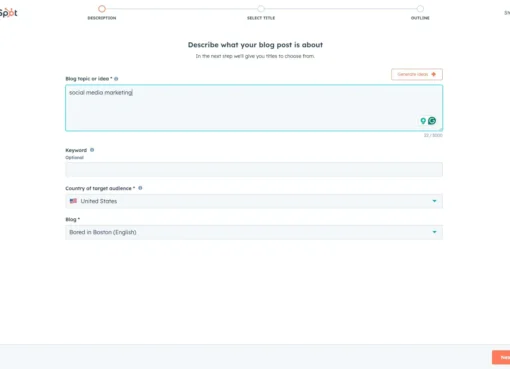The Comprehensive Content Checklist to Boost Your SEO in 2024

In SEO, content is king. Aside from creating new and valuable content, the existing content on your website should also be up to par with Google’s evolving standards.
Doing these two things reap huge rewards for your website. That’s why I say maintaining your content strategy is a huge part of SEO. And it’s why I made a content checklist, and separated this from the rest of the on-page elements on your website.
So I do recommend paying extra attention to this part as you go through your SEO strategy for the year.
Content Strategy & Optimization
Managing your content is an art—after all, you need to go through all sorts of tweaks and experiments to properly optimize your content and avoid having your writing disappear into the Google vortex.
Managing your content is, however, also a systematic process that can be broken down into three simple steps.
Webmaster’s Note: This is the last part of our SEO checklist series. Part one covers our technical SEO checklist, part two covers on-page SEO, and part three covers off-page SEO. These guides cover what you need to do for your website to improve its search engine rankings this 2024.
1. Audience Understanding
Not everyone who’s interested in your type of product or service is looking for the same thing. It’s a basic marketing principle. Different kinds of people will have different goals and needs when they’re looking up something on Google.
And like any other type of marketing, doing SEO the right way means doing your market research. The first thing you need to do for your content checklist is understand who your target audience is. That means determining what their needs and preferences are, and how they consume content.
This understanding shapes every aspect of your content strategy, ensuring that it resonates with and meets the needs of your intended audience.
Implementing Audience Understanding:
- Persona Development: Creating detailed profiles for different segments of your audience based on demographics, behaviors, and psychographics.
- User Intent Mapping: Identifying what your audience is seeking at different stages of their journey and tailoring content to meet those needs.
- Engagement Analysis: Monitoring how your audience interacts with your content across platforms to continuously refine your approach.
Why It’s Crucial: Understanding your audience ensures that your content is not just found but is also engaging, relevant, and valuable to those searchers who find it.
2. E-E-A-T Principles and Writing Helpful Content
Google introduced the E-A-T principle, standing for Expertise, Authoritativeness, and Trustworthiness, to guide content creators in producing content that ranks well.
Google then added an extra ‘E’ representing Experience — meaning they want to highlight publishers with firsthand knowledge and personal experience in content creation.
Implementing the E-E-A-T Principle:
- Showcasing Credentials: Highlighting the qualifications and experience of content creators. Create author’s pages for your blogs as well.
- Reference Authoritative Sources: Citing external, reputable sources and engaging in peer-reviewed research where applicable.
- Securing Testimonials and Reviews: Displaying user-generated accolades to enhance credibility.
- Sharing Firsthand Experiences: Providing unique insights based on direct experiences related to the content’s topic.
Keeping the E-E-A-T principle in mind whenever you make content can both prove and enhance your site’s credibility. This, then, can boost your ranking potential, as search engines favor content that demonstrates a high degree of expertise, authoritativeness, trustworthiness, and experience.
This goes hand-in-hand with Google’s Helpful Content Update, which puts a lot of weight on writing content that’s, well, helpful to users.
Ultimately, the key here is writing content on your website that’s made primarily for humans, and to help them solve whatever problems, questions, or needs that prompted them to use Google in the first place.
Want to know how to do that, while ensuring your content is still search engine friendly? Then follow my guide on how to rank for Google’s Helpful Content Update.
3. Content Audit and Refresh
A content audit and refresh involves systematically reviewing and updating your website’s existing content to enhance its relevance, accuracy, and SEO performance. This step of your content checklist ensures that all the content your website has stays up-to-date, authoritative, and valuable even if years have passed since it was first published.
Implementing a Content Audit and Refresh:
- Inventory and Evaluation: Creating a comprehensive inventory of all content assets and assessing their performance against current SEO standards and user engagement metrics.
- Identify Gaps and Opportunities: Analyzing the competitive landscape to identify content gaps and opportunities for improvement or expansion.
- Update and Optimize: Revamping outdated information, improving content structure and readability, and optimizing for current on-page SEO best practices.
The digital landscape and user preferences are constantly changing. So, auditing your content regularly ensures your content remains relevant, valuable, and competitive — improving your SEO performance and user engagement.
Key Takeaway
Content is king because it’s how websites answer questions, provide solutions, and ultimately meet user intent. Use this content checklist to ensure you keep all your pages up to Google’s evolving standards.
Prioritizing content, understanding your audience, aligning with E-E-A-T principles, and implementing regular audits can make all the difference when it comes to competing for that top spot on the SERPs.














![SEO Step-by-Step Tutorial: 3 Essentials for Beginners [+ Next Steps] seo-step-by-step-tutorial:-3-essentials-for-beginners-[+-next-steps]](https://blog.contentkrush.com/wp-content/uploads/2024/10/140299-seo-step-by-step-tutorial-3-essentials-for-beginners-next-steps-510x369.jpg)






Comment here